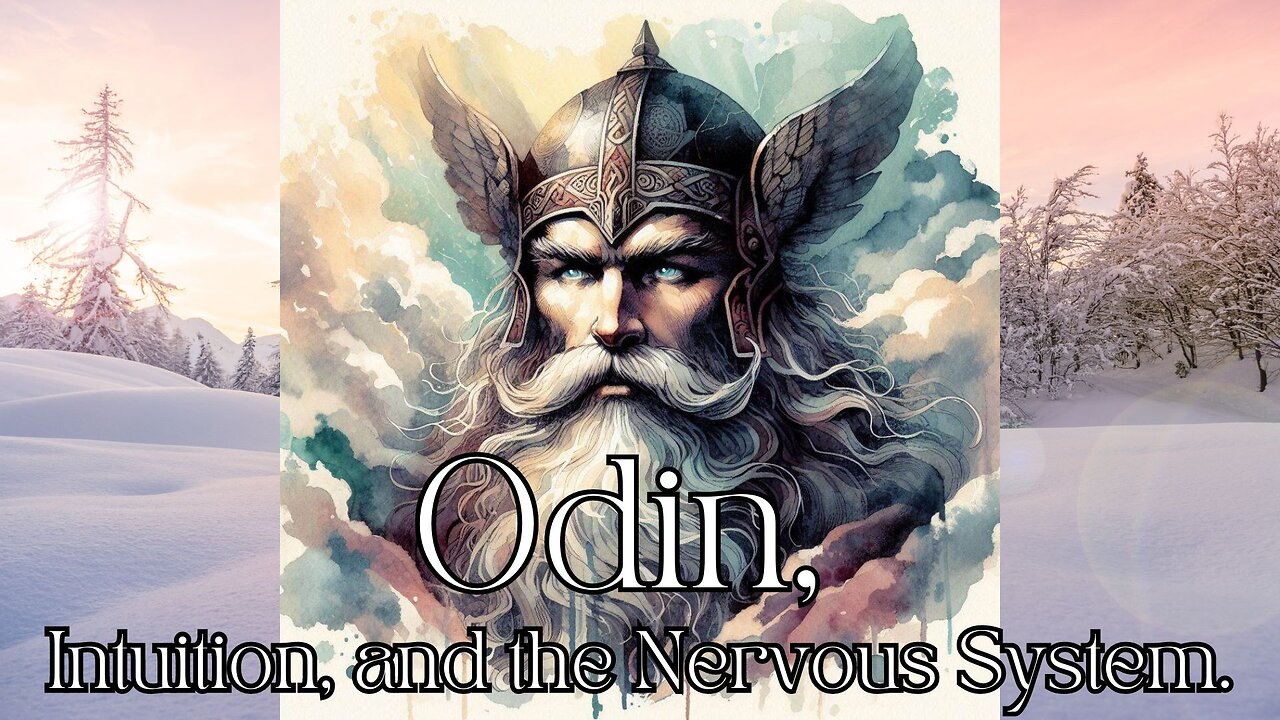Premium Only Content

Odin, Intuition, and the Nervous System.
This video examines the possible connections between the Norse God Odin and the notions of prophecy and foresight. The etymological clues alluding to this fitting connection are sound and the nature of the one-eyed Nordic God also helps to support this concept.
Odin is known as the wanderer or "Vegtam", and also "Wodan" and "Wotaz". The terms "Wodan" and "Wotaz" can be linked to the Celtic and Gaelic epithets for a seer or prophet - "Watis" and the Latin title of the same meaning "Vates". All of these can be tied to the Welsh term "Ofydd" which relates to druidism, bardism, and the ideas of philosophy, prophecy, and wisdom.
Odin is said to have hung on the world tree Yggdrasil for 9 days to gain knowledge of the Runes.
In the anatomical allegory, the great tree is the body and nervous system - with its stems, branches, and roots.
The world tree is also called Odin's steed or Odin's horse.
The horse is an ancient symbol of the body - and the spirit (or energy) is its rider. However, in Norse mythology, Odin's' actual horse is named Sleipnir - a horse that is said to have 8 legs.
This intriguing detail may also point to the human nervous system and the importance of its upkeep and mastery. The 8 legs of Sleipnir may represent the 8 holes of the sacrum, or the sacred bone located at the base of the spinal column - through which the sacral plexus, cauda equina, or horse's tail nerve bundle flows.
This short video will discuss these etymological and anatomical wonderings - and more.
Please consider subscribing and sharing to help grow this channel and help spread these ideas.
-
 LIVE
LIVE
The StoneZONE with Roger Stone
2 hours agoLAWFARE! Are Trump's Legal Assaults Winding Down? w/ Impeachment Lawyer David Schoen | The StoneZONE
1,340 watching -
 LIVE
LIVE
Patriots With Grit
21 hours agoShocking Changes Are Coming, If You Can Believe It | John Richardson
151 watching -
 LIVE
LIVE
The Jimmy Dore Show
2 hours agoConfronting LIES About January 6th! LA Fire Chief KNEW About Empty Reservoirs! w/ Greg Foreman
9,360 watching -

Dr Disrespect
9 hours ago🔴LIVE - DR DISRESPECT - MARVEL RIVALS - TOP 500 IN THE WORLD
117K24 -
 54:46
54:46
LFA TV
1 day agoThe Soon-Coming Social Millennium | TRUMPET DAILY 1.13.25 7pm
4.96K -
 1:00:03
1:00:03
Sarah Westall
2 hours agoWeaponized Chaos – Worst in Modern History; Changing Geopolitical Landscape w/ Andy Schectman
2.43K1 -
 LIVE
LIVE
SpartakusLIVE
2 hours ago#1 Hacker/Scammer PLUNGES into CRYPTO || !crypto !spartacoin
276 watching -
 53:15
53:15
Kimberly Guilfoyle
6 hours agoCalifornia Residents Demand Answers, Live with Rep Vince Fong, Mike Davis, and Paul Peterson | Ep. 188
40.8K56 -
 1:49:51
1:49:51
Redacted News
5 hours agoEMERGENCY! 10 MILLION UNDER FIRE WARNING & 100 MPH WINDS, NEWSOM UNVEILS CALIFORNIA 2.0 PLAN
125K183 -
 49:33
49:33
Candace Show Podcast
4 hours agoI Respond To Mr. And Mr. Macron | Candace Ep 131
99.6K277